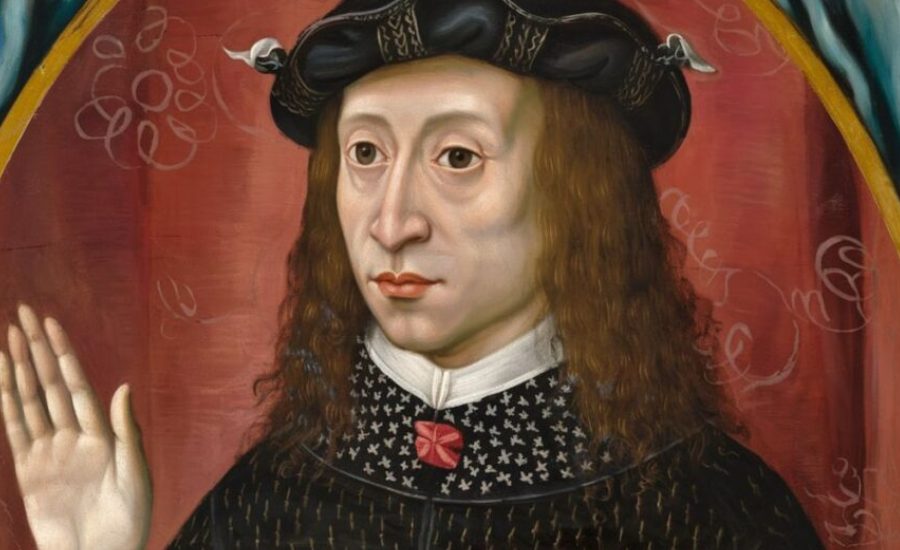1555 Portrait Servais Germany Flemish, Exploring, Captures & More
Introduction

One of the most fascinating works of art from the Flemish Renaissance has lately gained attention: the 1555 portrait of Servais Germany. This magnificent 16th-century piece provides insight into Antwerp’s illustrious artistic past during the German Renaissance.
This painting was hidden for a long time, but it was just uncovered and offers an intriguing look into the past. It sheds light on the artistic, historical, and cultural backdrop of the time in addition to showcasing the painters’ extraordinary abilities. The discovery of the 1555 picture of Servais Germany is extremely important since it is a powerful illustration of the creative prowess of the time.
Key Takeaways
One of the great treasures of the Flemish Renaissance is the freshly discovered portrait of Servais Germany from 1555. This remarkable work provides a glimpse into the cultural diversity of the German Renaissance in addition to showcasing Antwerp’s creative excellence in the sixteenth century.
The significance of protecting our cultural legacy is highlighted by the unearthing of this long-lost masterpiece. Examining the Servais Germany portrait in depth helps us better comprehend the subtleties of Flemish Renaissance portraiture and this significant time in art history.
The Intellectual Prowess of Heinrich Servais
German-born in 1555, Heinrich Servais was a well-known Renaissance man whose impact was seen in many different domains. Though little is known about his personal life, his contributions to academics and community life show that he is a guy who is passionate about the advancement of society. A strong supporter of educational reform who foresaw many characteristics of contemporary public education, Servais played a major influence in municipal governance. His devotion to intellectual advancement and communal development shows his key role in defining Renaissance Germany’s intellectual and social landscape.
Unveiling a Flemish Renaissance Masterpiece
The recent extraordinary finding of a long-lost treasure—the 1555 portrait of Servais Germany—has shed light on the world of painting. This long-forgotten portrait has reappeared to spark the interest of both art historians and connoisseurs of art.
The Rediscovery of a Lost Gem
This portrait’s rise from obscurity to notoriety is quite inspirational. It was kept secret in a private collection for a long time, and nobody realized its actual importance. Nonetheless, the historical and artistic significance of the portrait has been revealed because of the committed work of a group of art specialists. These specialists unearthed the painting’s origins and verified its authenticity via painstaking investigation and in-depth study, illuminating the artist’s skill and vision.
Exploring the Artistic Legacy of Antwerp
Servais Germany’s picture from 1555 demonstrates Antwerp’s extensive creative history. Pieter Pourbus and other Flemish Renaissance artists transformed portraiture into a legitimate art genre in Antwerp throughout the 16th century. The grandeur of the Northern Renaissance is reflected in these painters’ ability to capture not just the resemblance but also the spirit of their subjects.
The talent and inventiveness of Flemish Renaissance portraiture are best shown by this portrait. Its rediscovery presents a new chance to explore this extraordinary period of history, when art and history merged to leave a lasting legacy. The painting encourages us to enjoy the long-lasting influence of Antwerp’s creative heritage as well as to recognize the aesthetic triumphs of the past.
Exploring the Artistic Significance of the 1555 Portrait Servais Germany

More than merely a historical relic, the “1555 Portrait of Servais Germany” is an important work of culture that provides important insights into the aesthetic and social ideals of its day. This portrait stands out from other works of art from the same era because of the degree of realism and detail it depicts. Rich crimson and gold colors are used to emphasize the precise craftsmanship and high artistic standards that were valued throughout the Renaissance, as well as money and high rank.
The portrait’s dramatic three-dimensional appearance is further amplified by the artist’s deft use of chiaroscuro, a technique that manipulates light and shadow. By using this method, Servais’s contemplative expression comes to life and viewers are encouraged to interact with his ideas and character in greater detail. The Renaissance’s commitment to examining and praising the complexity of human nature is demonstrated by the painting’s ability to capture Servais’s physical appearance as well as his depth of thought.
The “1555 Portrait of Servais Germany” is essentially a vivid reminder of the rich artistic and cultural milieu of the Renaissance. It honors not just a significant historical individual but also the dedication of the time to intellectual curiosity and artistic brilliance. This painting gives us an insightful look at the ideals and creative accomplishments that characterized Renaissance society and its major players.
The 1555 Portrait Servais Germany: A Visual Feast
Explore the fascinating world of the Flemish Renaissance masterpiece, the 1555 portrait of Servais Germany. This portrait provides an insight into the creativity and attention to detail of the time, from a period known for its stunning representations of royalty.
The picture enthralls with its rich hues and deft brushwork. The subject, Servais, radiates regality with his assured look and fine garb. The patterned doublet, the elaborate sleeve embroidery, and the lace-trimmed collar all demonstrate the artist’s painstaking attention to detail.
In addition to being a work of art, the 1555 picture offers insight into the lifestyles of Flemish nobility. Servais exudes power and wealth, as seen by his confident expression and composed stance. This portrait not only demonstrates the artistry of Renaissance artists, but it also bears witness to the splendor and cultural diversity of Flemish nobility in that era
Honoring Heinrich Servais: His Contributions to Education and Civic Advancement
Heinrich Servais had a profound impact on education and civic engagement in addition to his well-known contributions to philosophy and the arts. Germany’s intellectual and cultural environment was greatly influenced by his progressive ideals and dedication to promoting inquiry and critical thought. Generation after generation of German identity was shaped by Servais’s creative approaches to education and social transformation. Even while his accomplishments may not be as well known as those of some of his peers, his influence is nevertheless strongly felt in the educational and cultural establishments that bear his name today.
Heinrich Servais’s legacy is commemorated by a number of organizations and awards that recognize his contributions to advancements in culture and education. His groundbreaking work in educational reform established the groundwork for significant developments in academic practice, indicating his enduring impact on the prevailing intellectual framework of his era. His significant influence is further embodied in the picture of Servais, Germany, from 1555, which stands as a tribute to his role in forming the Renaissance’s intellectual and cultural climate.
More than just a work of art, the 1555 picture of Servais, Germany, represents Servais’s lasting contribution to civic engagement and education. This depiction emphasizes the significance of Servais’s accomplishments even now, in addition to his continuous acknowledgement by academic and cultural institutions. His commitment and vision are still an inspiration, highlighting how significant his place is in the larger historical story.
Analysis of the Painting’s Composition
The powerful presence of the 1555 Portrait of Servais Germany demands attention right away. With his position in the center, Servais’s figure immediately captures the attention of the spectator and gives off a deeply dramatic sense of importance and authority.
With amazing accuracy, the artist manipulates light to create delicate shadows and shape Servais’s body. Servais’s outfit appears more vibrant due to the deliberate manipulation of light against the dark background, enhancing the brilliance of the colors.
The great attention to detail in the textiles’ textures in the painting demonstrates extraordinary skill. Every fold and drape in Servais’s attire reveals a narrative, allowing onlookers to admire the exquisite workmanship that went into each piece.
Servais’s look suggests a depth of thinking that seems to transcend the immediate surroundings, despite his absorption in the painting itself. His attentive eyes imply a deep inner existence that invites spectators to have a silent conversation with history.
With each glance, the painting’s composition carefully directs the viewer’s attention over the canvas, revealing new features. This well-considered arrangement turns the painting from a straightforward portrayal into a complex story with important sociological implications. As a result, the 1555 portrait of Servais Germany transcends beyond its original form and becomes a complex narrative with deep cultural and historical resonance.
The Legacy of Heinrich Servais: How the 1555 Portrait Captures a Turbulent Era

The achievements and life of Heinrich Servais eloquently capture the complexity of 16th-century Germany, a time of intense theological turmoil, political disintegration, and cultural shifts. Servais is a prominent character from this turbulent period, and his contributions are closely linked to the larger historical changes of his day. His accomplishments provide a window into the complex historical story of the time, encapsulating the spirit of a civilization going through significant transformation.
Significant changes characterized the 16th century, chief among them the Protestant Reformation, which altered the political and theological climate throughout Europe. Heinrich Servais became well-known throughout these radical shifts and actively participated in the developments that defined his time. His involvement makes clear the dynamic interaction between specific acts and the larger historical forces at work, which makes his narrative essential to comprehending the intricacies of the time.
One of the most important historical relics, the 1555 Portrait of Servais Germany sheds light on the tale of 16th-century Europe. In addition to honoring Servais’s individual legacy, this image graphically depicts the historical political and cultural changes. We are able to comprehend the ways in which people such as Servais maneuvered through and added to the changing historical context of their time better because of this artwork.
Symbolism and Meaning in the Painting
The 1555 portrait of Servais Germany is more than just a picture; it is a complex work of art that enthralls spectators with its complexity and importance. The painstaking attention to detail in the painting reflects the intricate relationship between hierarchy and individual identity, providing a window into the society conventions and values of the time.
The subject’s well picked and rendered clothing conveys a great deal about the era’s social structure. The fabric’s elaborate needlework is more than just ornamental; it also serves as a statement of wealth and artistry, highlighting the subject’s higher status and the artist’s deft expertise. These particulars have been chosen with care to improve the representation of the subject’s importance and sophistication.
Color is essential for expressing character and mood. While the colder hues convey a sense of calm and distance, the warmer tones inspire a feeling of warmth and approachability. In addition to enhancing the image’s emotional impact, this choice of color quietly highlights the subject’s character and social status.
Moreover, layers of meaning are added to the photograph by the presence of different accessories. Books and gavels are examples of objects that are more than just props; they represent authority, knowledge, and skill in their respective fields, which helps the audience better comprehend the subject’s position and role.
All things considered, the Portrait of Servais Germany is more than just a likeness. It functions as a story that ties together individual identification with more general cultural and societal issues of the day, offering a deep understanding of the complexities and ideals of the Renaissance.
Art Conservation Today: The Continued Importance of the 1555 Portrait Servais
The “1555 Portrait of Servais Germany” conservation highlights the difficult procedure involved in maintaining historical artworks and demonstrates a strong dedication to protecting cultural heritage. By keeping this work intact, we can ensure that its artistic and historical significance will be understood by future generations and that its value will remain constant over time.
The meticulous conservation work is indicative of a larger commitment to safeguarding our cultural heritage. By keeping the image safe, we make sure that Heinrich Servais’s influence—which is clear from his contributions and creative ideas—can continue to be studied and appreciated. In addition to accurately depicting Servais’s features, the painting also stands for his enduring impact on cultural dialogue and education.
Preserving this masterwork honors both the individual it depicts and the broader cultural environment of his day. It illustrates how historical personalities like Servais continue to influence our perception of the past while serving as a monument to the period’s intellectual and creative achievements. This preservation effort celebrates the lasting relevance of Servais’s achievements by ensuring that his memory and the artistic merit of the image remain significant and relevant for future audiences.

Facts:
- Portrait Details: The “1555 Portrait of Servais Germany” is a significant Flemish Renaissance artwork that depicts Heinrich Servais, a notable figure from the 16th century. The painting showcases the intricate details and artistry of the period.
- Historical Context: The portrait provides insight into the cultural and artistic milieu of Antwerp during the Flemish Renaissance. This era was characterized by a flourishing of art and intellectual activity, influenced by the broader European changes of the time.
- Heinrich Servais: Born in 1555, Servais was known for his contributions to education and civic engagement. His work in educational reform and community development made a lasting impact on German society.
- Artistic Techniques: The painting is noted for its use of chiaroscuro, a technique that manipulates light and shadow to create a dramatic three-dimensional effect. This technique helps highlight Servais’s contemplative expression and the richness of the portrait.
- Rediscovery: The portrait was hidden for a long period and recently rediscovered, leading to renewed interest and study. Its conservation reflects a broader commitment to preserving cultural heritage.
- Symbolism: The portrait’s details, such as the elaborate embroidery and symbolic accessories, reflect the social hierarchy and personal status of Servais, providing deeper insights into the era’s values.
Summary:
The “1555 Portrait of Servais Germany” is a striking example of Flemish Renaissance art, offering a window into the cultural and intellectual landscape of 16th-century Antwerp. Heinrich Servais, depicted in this portrait, was a significant figure known for his contributions to education and civic life. The painting, recently uncovered after being hidden for many years, exemplifies the artistic excellence of the period with its detailed representation and use of chiaroscuro.
The portrait not only highlights the technical skill of Renaissance artists but also serves as a symbol of the era’s cultural and intellectual values. It reflects the intricate social hierarchy of the time through its rich details and symbolism. The conservation of this artwork underscores the importance of preserving cultural heritage and continuing to honor historical figures like Servais.
FAQs:
1. What is the significance of the “1555 Portrait of Servais Germany”?
- The portrait is a crucial piece of Flemish Renaissance art, depicting Heinrich Servais and reflecting the artistic, cultural, and intellectual context of 16th-century Antwerp. It highlights the era’s artistic techniques and social values.
2. Who was Heinrich Servais?
- Heinrich Servais, born in 1555, was a prominent figure in 16th-century Germany known for his contributions to education and civic life. He played a key role in educational reform and community development.
3. Why is the portrait important for art history?
- The portrait is important for its detailed representation and use of chiaroscuro, showcasing the artistic mastery of the Flemish Renaissance. It also provides insights into the cultural and social aspects of the period.
4. How was the portrait rediscovered?
- The portrait was hidden in a private collection for many years and was recently rediscovered through the efforts of art historians and specialists who verified its authenticity and historical significance.
5. What techniques are used in the painting?
- The painting employs chiaroscuro, a technique that manipulates light and shadow to create a three-dimensional effect. This technique enhances the realism and depth of the portrait.
6. How does the painting reflect the values of the Renaissance?
- The painting’s detailed portrayal and symbolic accessories reflect the social hierarchy and values of the time, including wealth, status, and intellectual pursuits. It embodies the Renaissance’s focus on realism and individual identity.
7. What is the significance of preserving the portrait?
- Preserving the portrait is vital for maintaining cultural heritage and allowing future generations to appreciate and study the artistic and historical context of the Renaissance. It honors Heinrich Servais’s contributions and the era’s artistic achievements.
For more Information About Blog visit Trend Addictor .com







